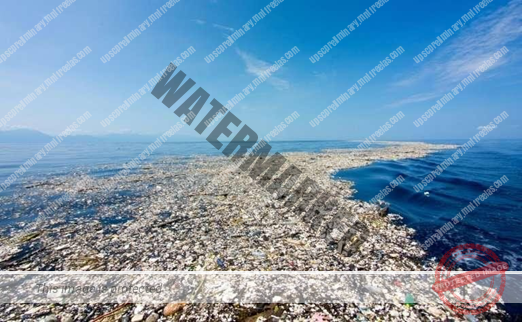- MARINE POLLUTION
- THE POLLUTION PROCESS
- PLASTIC POLLUTION – GARBAGE PATCH
UNIT 4 – ENVIRONMENTAL DEGRADATION – PART 11
4. MARINE POLLUTION
Oceans are the largest water bodies on the planet Earth. Over the last few decades, surplus human activities have severely affected marine life on the Earth’s oceans.
Ocean pollution, also known as marine pollution, is the spreading of harmful substances such as oil, plastic, industrial and agricultural waste and chemical particles into the ocean.
Incidents like New Jersey-size dead zone that forms each summer in the Gulf of Mexico, or the thousand-mile-wide belt of plastic trash in the northern Pacific Ocean, tonnes of plastic found in the dead whales, coral bleaching, destruction of marine ecosystem like kelp etc. are the alarming threats which indicates the severity of this issue and its impact on global warming.
Ocean water covers more than 70% of the Earth, and only in recent decades have we begun to understand how humans impact this watery habitat. Marine pollution, as distinct from overall water pollution, focuses on human-created products that enter the ocean. Before 1972, humans around the word spewed trash, sewage sludge, and chemical, industrial, and radioactive wastes into the ocean with impunity. Millions of tons of heavy metals and chemical contaminants, along with thousands of containers of radioactive waste, were purposely thrown into the ocean.
THE LONDON CONVENTION, ratified in 1975 by the United States, was the first international agreement to spell out better protection for the marine environment. The agreement implemented regulatory programs and prohibited the disposal of hazardous materials at sea. An updated agreement, the London Protocol, went into effect in 2006, more specifically banning all wastes and materials except for a short list of items, like leftover materials from dredging.
Many of these pollutants sink to the ocean’s depths or float far distances from their original source, where they are consumed by small marine organisms and introduced into the global food chain. Marine pollution encompasses many types of pollution that disrupt the marine ecosystem, including chemical, light, noise, and plastic pollution.
The pollution processes
Many ocean pollutants are released into the environment far upstream from coastlines. Nutrient-packed fertilizers applied to farmland, for example, often end up in local streams and are eventually deposited into estuaries and bays. These excess nutrients trigger massive blooms of algae that rob the water of oxygen, leaving dead zones where few marine organisms can live. Some chemical pollutants climb high into the food webs—like DDT, the insecticide that placed the bald eagle on the United States Fish and Wildlife’s Endangered Species List.
Even pharmaceuticals ingested by humans, but not fully processed by our bodies, end up in aquatic food webs.
Light pollution penetrates under the water, creating a vastly different world for fish living in shallow reefs near urban environments. Light disrupts the normal cues associated with circadian rhythms, to which species have evolved timing of migration, reproducing, and feeding.
Artificial light at night can make it easier for predators to find smaller fish prey and can affect breeding in reef fish. The increased presence of loud or persistent sounds from ships, sonar devices, and oil rigs disrupts natural noises in the marine environment. For many marine mammals, like whales and dolphins, low visibility and large distances make non-visual underwater communication critical.
Toothed whales use echolocation—emitting sounds that reflect off surfaces—to help them “see” in the ocean. Unnatural noises interrupt communication, disrupting migration, communication, hunting, and reproduction patterns for many marine animals.
PLASTIC POLLUTION – GARBAGE PATCH
Plastic pollution seeps into the ocean through run-off and even purposeful dumping. The amount of plastic in the Atlantic Ocean has tripled since the 1960s. The garbage patch floating in the Pacific Ocean, almost 620,000 square miles—twice the size of Texas—is a powerful image of our plastic problem.
A huge culprit is single-use plastics, used once before tossed into the trash or directly into the ocean. These single-use items are accidentally consumed by many marine mammals. Plastic bags resemble jellyfish, a common food for sea turtles, while some seabirds eat plastic because it releases a chemical that makes it smell like its natural food.
Discarded fishing nets drift for years, ensnaring fish and mammals. Bits of plastic swirl throughout the water column, even sinking to the deepest depths of the ocean. Scientists found plastic fibres in corals in the Atlantic Ocean—and more concerning, they found that the corals readily ate plastic over food. Dying marine mammals, washing up on shore, also contain plastic inside their stomachs.

